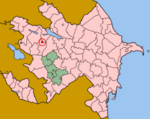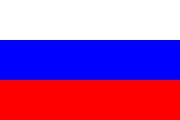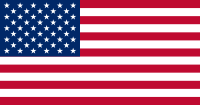Ganja, Azerbaijan
| Ganja Gəncə |
|||
|
|||
 |
|||
| Coordinates: | |||
| Country | Azerbaijan | ||
|---|---|---|---|
| Government | |||
| - Mayor | Eldar Azizov | ||
| Area | |||
| - Total | 110 km² (42.5 sq mi) | ||
| Elevation | +408 m (1,339 ft) | ||
| Population (2008) | |||
| - Total | 320,348 | ||
| Time zone | GMT+4 (UTC+4) | ||
| - Summer (DST) | GMT+5 (UTC+5) | ||
| Website: [www.ganca.net] | |||
Ganja IPA: [ɟæn'ʤæ] (Azerbaijani: Gəncə, Russian: Гянджа) is Azerbaijan's second-largest city. In Soviet times it was named Kirovabad (Russian: Кировабад).
Contents |
Foundation of the city
According to medieval Arab sources, the city of Ganja was founded in 859-60 by Mohammad b. Khaled b. Yazid b. Mazyad, the Arab governor of the region in the reign of the caliph Al-Mutawakkil, and so-called because of a treasure unearthed there. According to the legend, the Arab governor had a dream where a voice told him that there was a treasure hidden under one of the three hills around the area where he camped. The voice told him to unearth it and use the money to found a city. He did so and informed the caliph about the money and the city. Caliph made Mohammad the hereditary governor of the city on a condition that he would give the money he found to the caliph.[1]
Foundation of the city by Arabs is confirmed by the medieval Armenian historian Movses Kagankatvatsi, who mentions that the city of Ganja was founded in 846-47 in the canton of Arshakashen by the son of Khazr Patgos, “a furious and merciless man”.[2] Khazr is believed to be a corrupted form of the name of “Khaled”, while “Patgos” stands for Persian “patgospan”, i.e. governor.[3] Arshakashen (Armenian: Արշակաշեն, meaning "built by Arshak") was one of the cantons of the province of Utik, which was part of Armenia, before 387 AD, and of Caucasian Albania after the division of the Kingdom of Armenia between Persia and Byzantium.
However, modern historians believe that the Persian name Ganja (گنجه / Ganjeh, "Ganja" derives from the New Persian ganj (گنج: "treasure, treasury")) suggests that the city existed in pre-Islamic times and was likely founded in the fifth century A.D.[4] The area in which there was Ganja, during the 9th to 12th century named Arran; its urban population spoke mainly in the Persian language.[5][6]
Etymology
Some experts believe that the best the etymology of "Ganja", (Persian: گنجه, Azerbaijani: گنجه Ganja / Ganjeh) that it refers to the Persian word of ganj گنج which means treasure, or treasury. There are several other places in Iran and the wider region wich has a similar name as Ganja.[7] Other experts think that the name derived from a turkic word "gen" meaning wide.[8]
History

- See also: Arran
Historically an important city of the South Caucasus, Ganja has been part of Sassanid empire, Great Seljuk Empire, Atabegs of Azerbaijan, Khwarezmid Empire, Il-Khans,[9] Timurids,[10] Jalayirids,[11] Qara Qoyunlu,[12] Ak Koyunlu[13][2], and the Ganja Khanate. Ganja is also the birthplace of the famous poet Nizami. The people of Ganja experienced a temporary cultural decline after an earthquake in 1139 and again after the Mongol invasion in 1231. The city was revived after the Safavids came to power. She was also managed by Ottomans between 1578-1603 and 1724-1735. For a short period, Ganja was renamed Abbasabad by Shah Abbas after war against the Ottomans. He build a new city 8 km to the southwest of the old one, but the name changed back to Ganja during the time[14] During the Safavid rule, it was the capital of the Karabakh (Ganja) beylerbey,[15] one of the four such administrative units and principalities.[16] In 1747, Ganja became the center of the Ganja Khanate.
According to the October 1813 Gulistan Treaty, the Ganja Khanate, together with most of Azerbaijan and Georgia, was recognized as part of Russian Empire after Persia's defeat in the Persia-Russia wars.[17] It was renamed Elizavetpol (Russian: Елизаветполь) after the wife of Alexander I of Russia, Elizabeth, and in 1868 became the capital of Elizavetpol Governorate.[18] Elizavetpol was a uyezd of Tiflis Governorate before 1868.
In 1918, Ganja became the temporary capital of the Azerbaijan Democratic Republic, at which point it was renamed Ganja again, until Baku was recaptured from the British backed Centrocaspian Dictatorship. In April 1920, the Red Army occupied Azerbaijan. In May 1920, Ganja was the scene of an abortive anti-Soviet rebellion during which the town was heavily damaged by fighting between the insurgents and the Red Army.[19] In 1935, Joseph Stalin renamed the city Kirovabad after Sergei Kirov. In 1991, Azerbaijan re-established its independence, and the ancient name of the city was given back.
Today Ganja is the second largest city in Azerbaijan. [3] According to the official government data, at the beginning of 2006, the population of Ganja was 305,600.[20][21] It has an international airport, and is home to the Nizami Mausoleum, re-built in 1991.
Historic Armenian community
In addition to Persian- and Turkic-speaking Muslims, the city has had a numerically, economically and, culturally significant Armenian community.[22][23] Among the Armenians, the city is known as Gandzak (Գանձակ)[24][25].[26][27] The word Gandzak is likewise associated with the concept of treasure or riches - gandz (Arm. - գանձ).[28] The city's historically important Christian figures include Kirakos Gandzaketsi (Կիրակոս Գանձակեցի, 1201-1271, author of the History of the Armenians[29]), Armenian[30] philosopher Mkhitar Gosh (Մխիթար Գոշ, c. 1130–1213)[31] author of the Code of Laws that was used in Armenia, Armenian Kingdom of Cilicia and Armenian diasporan groups in Europe,[32] and Grigor Paron-Ter (Գրիգոր Պարոն Տեր, 1560-1645) - Armenian Patriarch of Jerusalem. Among the modern time's prominent Armenian person's of the city were Russian-Armenian architect Karo Halabyan,[33] secretary of Armenian SSR communist party, President Askanaz Mravyan,[34] Marshall Hovhannes Baghramyan,[35] Chief Marshal Hamazasp Babadzhanian and the Olympic champion Albert Azaryan.[36]
The founder of the Hethumid dynasty, Oshin of Lampron was an Armenian nakharar and lord of a castle near Ganja who fled to Cilicia in 1075 during the Seljuk invasion of Armenia.[37]
Administrative organization
Ganja is divided into:
- Kəpəz Rayon, with about 160,000 people
- Nizami Rayon, with about 140,000 people
- Hacıkənd village, with about 500 people[38]
Education
Ganja is home to four major institutes for post-secondary education.
- Ganja State University
- Azerbaijan State Agricultural Academy
- Azerbaijan Technological University
- Azerbaijan Teachers Institute, Ganja Branch
Famous people
Ganja is known for its famous people:
- Nizami Ganjavi
- Mahsati Ganjavi
- Javad Khan
- Mirza Shafi Vazeh
- Mirza Topchubashov
- Israfil Mammadov
- Fikrat Amirov
- Nigar Rafibeyli
Languages
About 99% of the population of Ganja speak Azerbaijani, only 1% of the population speak in other languages.
Sister cities
 Derbent, Russian Federation
Derbent, Russian Federation Izmir, Turkey
Izmir, Turkey Moscow, Russian Federation
Moscow, Russian Federation Newark, New Jersey, U.S.
Newark, New Jersey, U.S. Rustavi, Republic of Georgia
Rustavi, Republic of Georgia- Gyumri, Republic of Armenia
Pictures of Ganja
References
- ↑ V.Minorsky. A History of Shirvan and Derbent.
- ↑ History of the Caucasian Albanians by Movses Dasxuranci, C.J.F. Dowsett trans. (London 1961), chapter 21.
- ↑ C. J. F. Dowsett. A Neglected Passage in the "History of the Caucasian Albanians". Bulletin of the School of Oriental and African Studies, University of London, Vol. 19, No. 3. (1957), pp. 456-468.
- ↑ Encyclopedia Iranica, "Ganja", C. Edmund Bosworth
- ↑ История Востока. В 6 т. Т. 2. Восток в средние века.М., «Восточная литература», 2002. ISBN 5-02-017711-3 (History of the East. In 6 volumes. Volume 2. Moscow, publishing house of the Russian Academy of sciences «East literature»): The polyethnic population of Albania left-bank at this time is increasingly moving to the Persian language. Mainly this applies to cities of Aran and Shirvan, as begin from 9-10 centuries named two main areas in the territory of Azerbaijan. With regard to the rural population, it would seem, mostly retained for a long time, their old languages, related to modern Daghestanian family, especially Lezgin. (russian text: Пестрое в этническом плане население левобережнoй Албании в это время все больше переходит на персидский язык. Главным образом это относится к городам Арана и Ширвана, как стали в IX-Х вв. именоваться два главные области на территории Азербайджана. Что касается сельского населения, то оно, по-видимому, в основном сохраняло еще долгое время свои старые языки, родственные современным дагестанским, прежде всего лезгинскому.
- ↑ Дьяконов, Игорь Михайлович. Книга воспоминаний. Издательство "Европейский дом", Санкт-Петербург, 1995., 1995. - ISBN 5-85733-042-4. cтр. 730-731 Igor Diakonov. The book of memoirs.
- ↑ World City Name Database (search for names and maps) - nona.net
- ↑ [Azerbaijani National Encyclopedia]
- ↑ Iran. (2007). In Encyclopædia Britannica. Retrieved March 17, 2007
- ↑ Timurid Dynasty. (2007). In Encyclopædia Britannica. Retrieved March 16, 2007
- ↑ Jalayirid. (2007). In Encyclopædia Britannica. Retrieved March 17, 2007
- ↑ Kara Koyunlu. (2007). In Encyclopædia Britannica. Retrieved March 15, 2007
- ↑ Ak Koyunlu. (2007). In Encyclopædia Britannica. Retrieved March 17, 2007
- ↑ Seyyaf Sednik oqli Pashayev. "The Monuments of Ganja Khanate of the Period form 1606 - 1804". Retrieved on 2007-02-16.
- ↑ "Beglerbeg" in Cyclopædia dictionary, (ed. Ephraim Chambers), First Volume, London: Printed for J. and J. Knapton (and 18 others), 1728, p. 95 (accessed March 17, 2007)
- ↑ I.Petrushevskiy. Ocherki po istorii feodal'nikh otnosheniy d Azerbaijane i Armenii v XVI - nach. XIX vv., Leningrad, 1949, p. 122, in Russian
- ↑ John F. Baddeley, "The Russian conquest of the Caucasus", London: Longmans, Green and Co., 1908, p. 67, citing "Tsitsianoff's report to the Emperor: Akti, ix (supplement), p. 920".
- ↑ Елизаветпольская губерния (Elizavetpol Governorate) in Brockhaus and Efron Encyclopedic Dictionary (Russian)
- ↑ Leeuw, Charles Van Der (2000), Azerbaijan: A Quest For Identity, p. 124. St. Martin's Press, ISBN 0312219032.
- ↑ The State Statistical Committee of the Republic of Azerbaijan, "Population by economic regions at the beginning of the 2006"
- ↑ Census table for Azerbaijani cities
- ↑ Soviet Census in 1926-1979, Newspaper Pravda Press, Moscow, 1983
- ↑ According to the 1892 official data, 10524 of 25758 inhabitants of the city were Armenians, there were 6 Armenian Apostolic (Gregorian) churches", Elizavetpol article, Brockauz and Efron Encyclopedia (in Russian)
- ↑ "the union of Georgian and Armenian armies near Gandzak", Great Soviet Encyclopedia (BSE)
- ↑ "Mkhitar Gosh was born in Gandzak", Mkhitar Gosh article, (BSE)
- ↑ Рыжов К.В. Все монархи мира. Древняя Греция. Древний Рим. Византия - М.: 2002. - 576 с. "Irakly with his army.... took Karin (Erzeroum), Dvin, Nakhichevan and Gandzak (Ganja)" [1]
- ↑ "Gandzak (Ganja)" [jss.oxfordjournals.org/cgi/reprint/6/2/145.pdf THE DEATH OF THE LAST 'ABBASID CALIPH: A CONTEMPORARY MUSLIM ACCOUNT, by BOYLE J. // Semitic Studies.1961; 6: 145-161
- ↑ Dictionary.Hayastan.com
- ↑ Kirakos, Gandzaketsi, History of the Armenians, New York: Sources of the Armenian Tradition, 1986.
- ↑ "Armenian philosopher, literary and public activist", Mkhitar Gosh at BSE
- ↑ Mkhitar Gosh at BSE
- ↑ "Despite the code of Gosh hadnt official character, it used in Armenia, as in the foreign countries, where there were Armenian population". Code of Laws by Gosh at Great Soviet Encyclopedia (BSE)
- ↑ Alabyan at BSE
- ↑ Mravyan at BSE
- ↑ Baghramyan at BSE
- ↑ Azarian at BSE
- ↑ M. Setton, Kenneth; Robert Lee Wolff, Harry W. Hazard (1969). "XVIII: The Kingdom of Cilician Armenia". The later Crusades, 1189-1311 (A History of the Crusades, volume, II). Madison, Wisconsin: University of Wisconsin Press. pp. 633. ISBN 0299048446. http://digital.library.wisc.edu/1711.dl/History.CrusTwo.
- ↑ Toward Civil Society Center
- Ganja (as Gəncə) at GEOnet Names Server
- World Gazetteer: Azerbaijan – World-Gazetteer.com
External links
- Ganja - The memories of stones
- Ganja Automobile Factory
- Ganja at the Azerbaijan Development Gateway
- Historical Monuments of Ganja
- Nizami Ganjavi Museum of History and Ethnography of Ganja
|
|||||||||||
|
|||||||||||